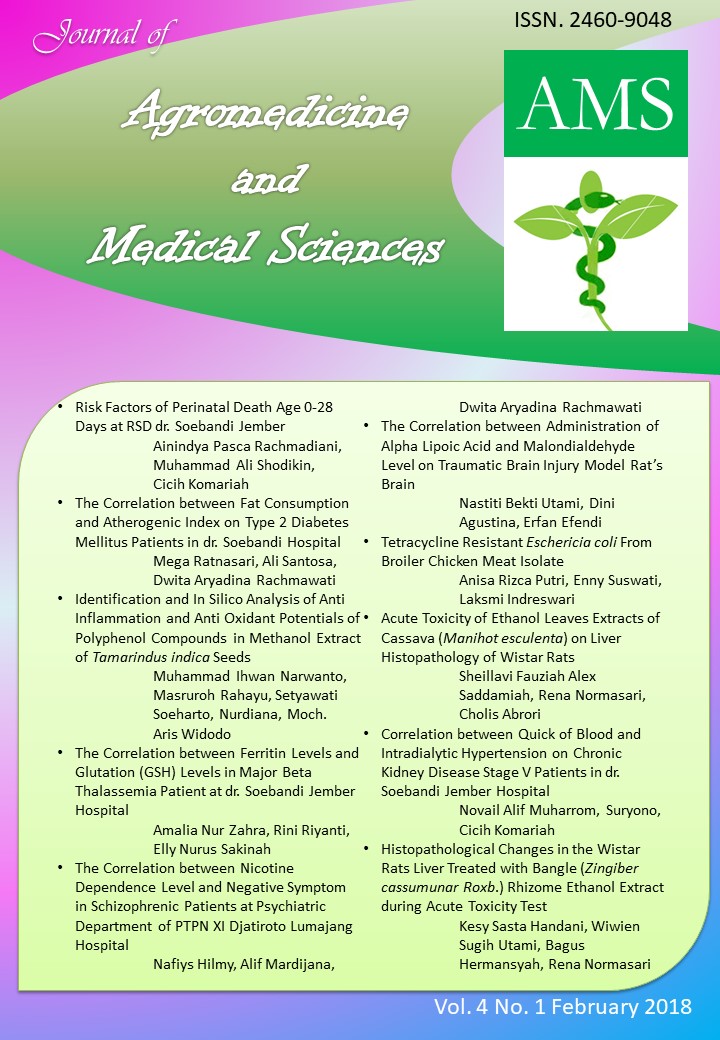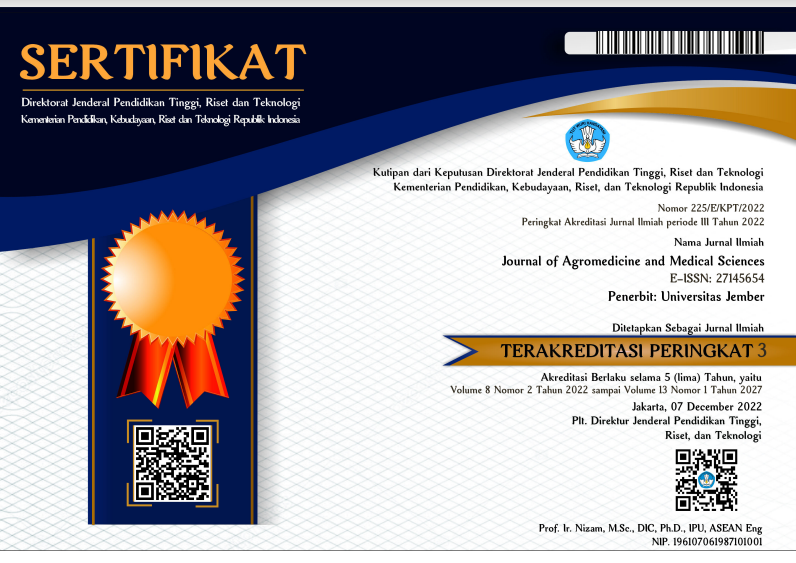The Correlation between Administration of Alpha Lipoic Acid and Malondialdehyde Level on Traumatic Brain Injury Model Rat’s Brain
DOI:
https://doi.org/10.19184/ams.v4i1.6855Abstract
Chronic traumatic encephalopathy (CTE) is a neurodegenerative disease caused by repetitive brain trauma that can
continues to be dementia, alzheimer and parkinsonism. Traumatic brain injury increased free radicals in brain that
caused oxidative stress and induced lipid peroxidation, neuron damage and producing MDA. The purpose is to
determine the correlation between administration of ALA and MDA level in rat’s brain model of traumatic brain
injury and its effective dose. Rats are randomLy divided into 7 groups. Normal group without treatment, K(-) was
given NaCl 0,9% 1,5 mL, K(+) was given citicoline 6,75 mg, K1 was given ALA 1,0125 mg, K2 was given ALA 2,025
mg, K3 was given ALA 4,05 mg, K4 was given ALA 8,1 mg and received 30 days traumatic brain injury treatment by
dropped 245 g load on the rat’s head at 35 cm height. MDA level in brain were measured on the 31th day with
MDA-TBA method by spectrofotometer. The averages of MDA levels were N 1,64 μg/mL; K(+) 2,09 μg/mL; K(-) 4,87
μg/mL; K1 2,73 μg/mL; K2 2,68 μg/mL; K3 2,20 μg/mL and K4 2,02 μg/mL. Pearson’s analysis shows strong and
significant negative correlation (r= -0,790) between administration of ALA and MDA level in rat’s brain model of
traumatic brain injury (p<0,05). The effective dose of ALA is 8,625 mg/150gBW.
Keywords : Alpha lipoic acid, MDA, traumatic brain injury, CTE






















